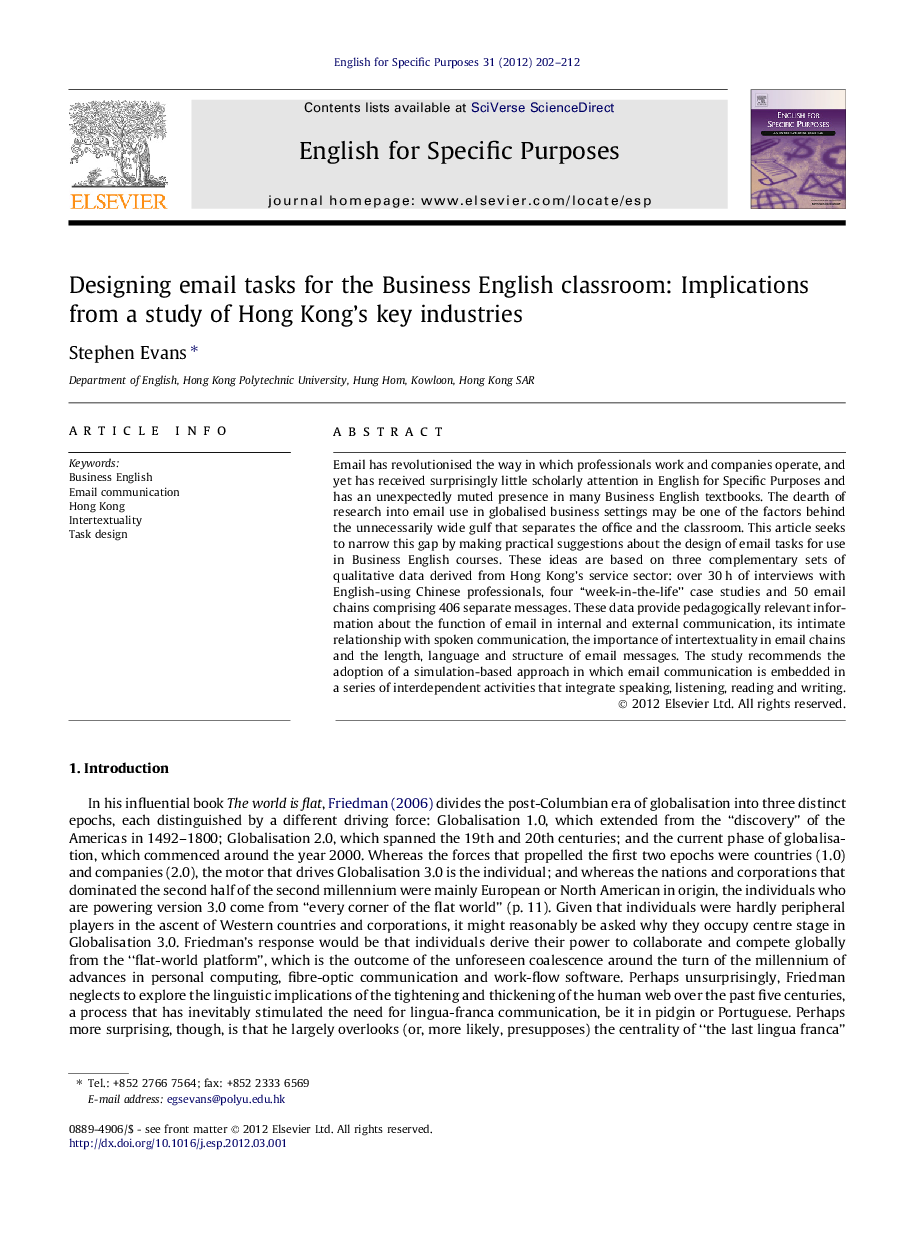| Article ID | Journal | Published Year | Pages | File Type |
|---|---|---|---|---|
| 355663 | English for Specific Purposes | 2012 | 11 Pages |
Email has revolutionised the way in which professionals work and companies operate, and yet has received surprisingly little scholarly attention in English for Specific Purposes and has an unexpectedly muted presence in many Business English textbooks. The dearth of research into email use in globalised business settings may be one of the factors behind the unnecessarily wide gulf that separates the office and the classroom. This article seeks to narrow this gap by making practical suggestions about the design of email tasks for use in Business English courses. These ideas are based on three complementary sets of qualitative data derived from Hong Kong’s service sector: over 30 h of interviews with English-using Chinese professionals, four “week-in-the-life” case studies and 50 email chains comprising 406 separate messages. These data provide pedagogically relevant information about the function of email in internal and external communication, its intimate relationship with spoken communication, the importance of intertextuality in email chains and the length, language and structure of email messages. The study recommends the adoption of a simulation-based approach in which email communication is embedded in a series of interdependent activities that integrate speaking, listening, reading and writing.
► Pedagogically motivated study of email communication in Hong Kong’s business world. ► Findings based on 31 interviews, 4 case studies and 406 email messages. ► Emails are written simply and directly and in less than 5 min and 50 words. ► Email messages bind together flows of spoken and written workplace communication. ► Email chains rather than discrete messages should be basis for task design.
